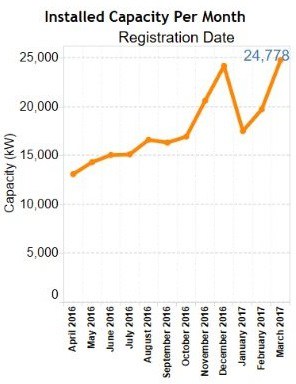QLD Solar Power as a whole now produces more energy than the highest capacity power station in the state.
Queensland has 1,805mw of solar PV capacity created by residential and business – this is bigger than the 1,780mw the Gladstone coal fired power station produces. In March 2017, Queenslanders added 25mw of rooftop solar – thus breaking the record and overtaking the Gladstone plant. In Australia there are 1.5m solar powered homes and they generate approximately 50% of their own electricity. As the price of panels, inverters and storage drops lower and efficiency grows we will see this increase as a result. The 25mw of PV solar was the biggest month for solar installations in Queensland since 2012 and the overtaking was flagged in a speech by QLD Energy Minister Mark Bailey last month at a battery storage conference in Brisbane. Bailey was quoted as saying “…the combined solar rooftops are now the second largest power generator, just behind the 1680 MW Gladstone Power Station”.
QLD Solar Power stats – now over 32% of homes
According to head of the Energy Storage Council John Grimes, “Over 32 per cent of homes in Queensland have solar panels on their rooftops, so it’s actually the biggest power plant in Queensland, which is a fantastic achievement.” Grimes also noted that there hasn’t been too much government subsidy in getting to this point (the old $0.44c / mwh plans were grandfathered back in 2012) and that “(reaching this solar milestone is) just about governments getting out of the way and letting cost-effective technology actually do its job”.
QLD Solar Power (source: reneweconomy.com.cau)
The potential of solar for rural communities
On the ABC, Tim Latimer of Redback Technologies noted that “There’s many, many Indigenous communities around Australia in remote regions that pay upwards of 60 cents per kilowatt on energy because of the diesel generation costs.” With solar + storage now easily reaching 50% of that, there’s a massive amount of scope for outback Australia to embrace solar power and solar energy storage. At half the cost with none of the noise or pollution and no need for constant refilling, it seems like a no brainer. Hopefully this is something the government and companies can sort out sooner rather than later – for the benefit of everybody.


